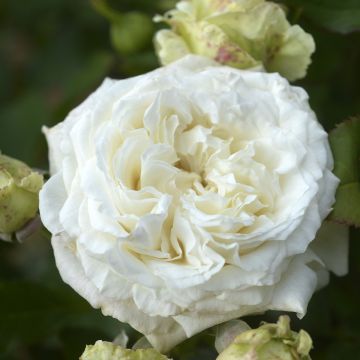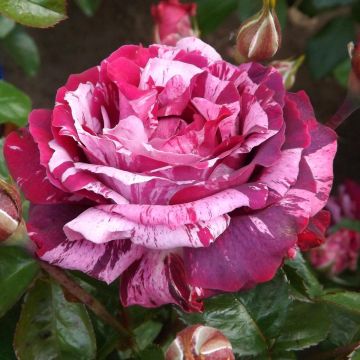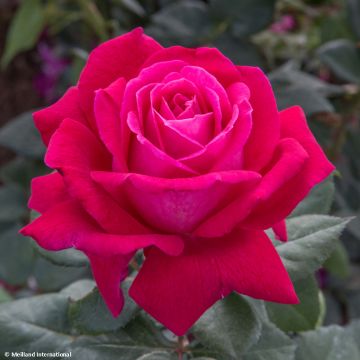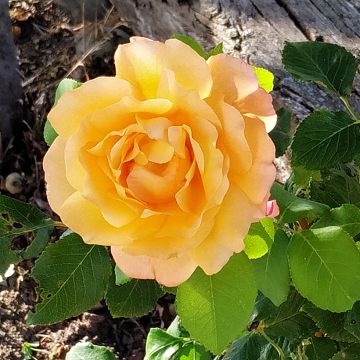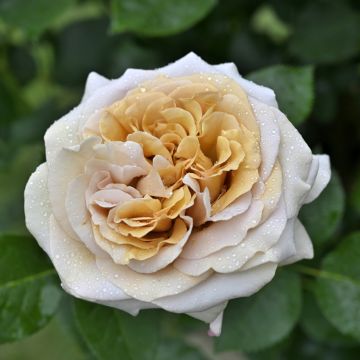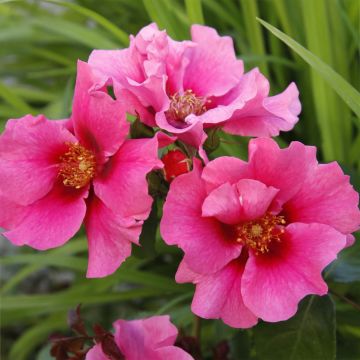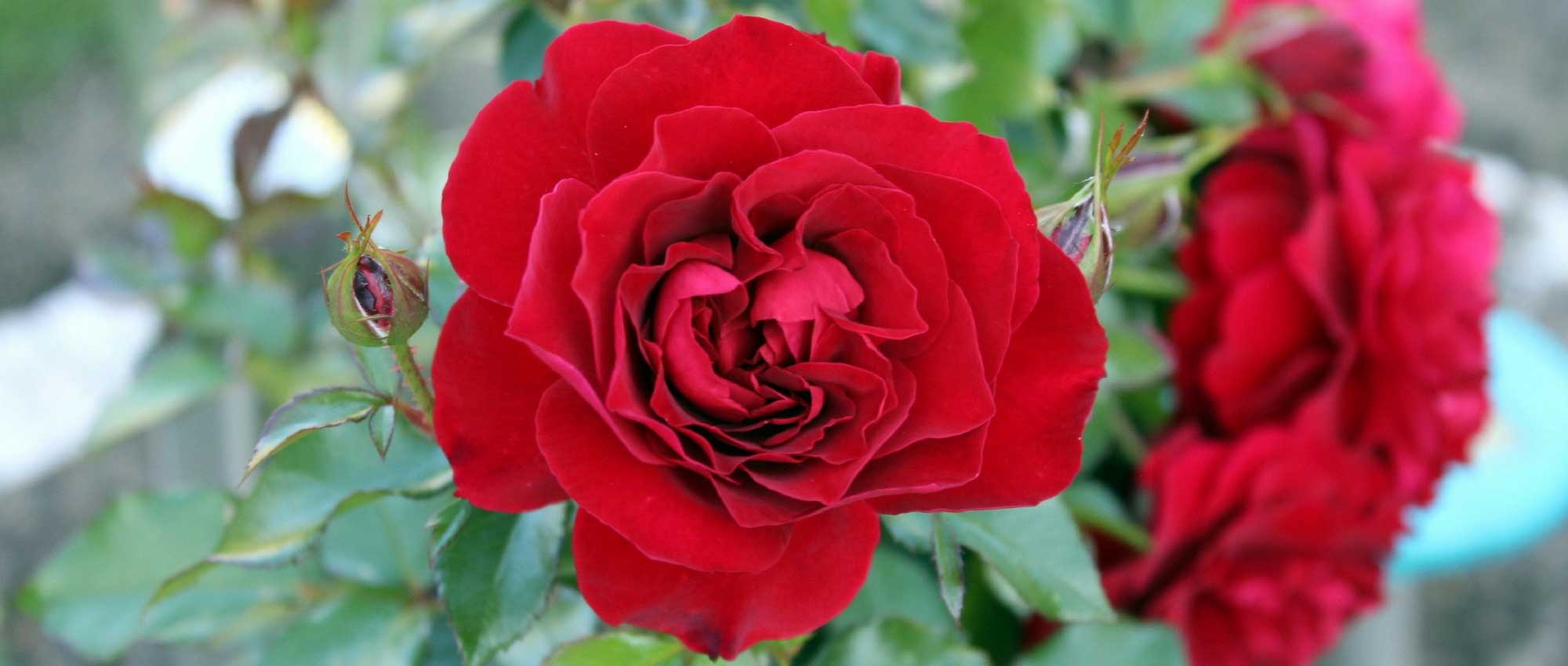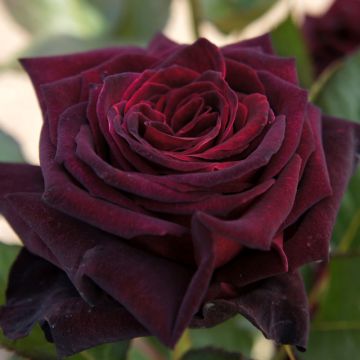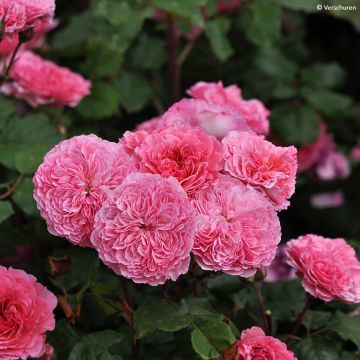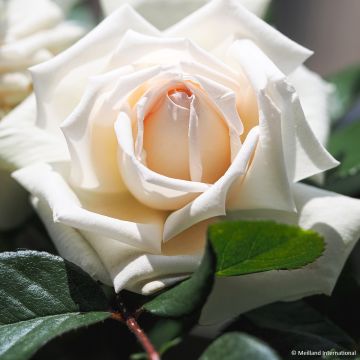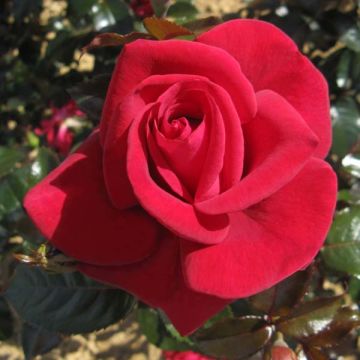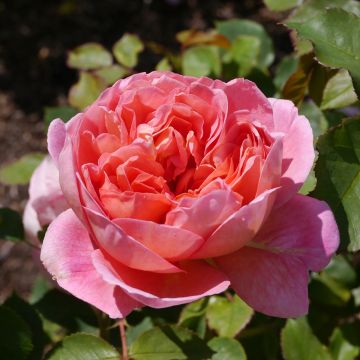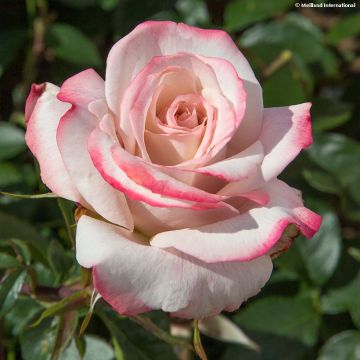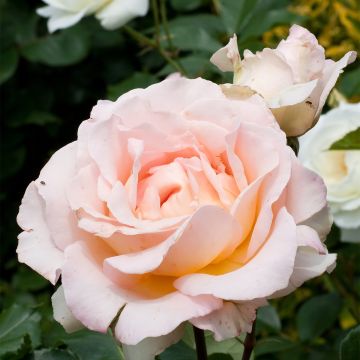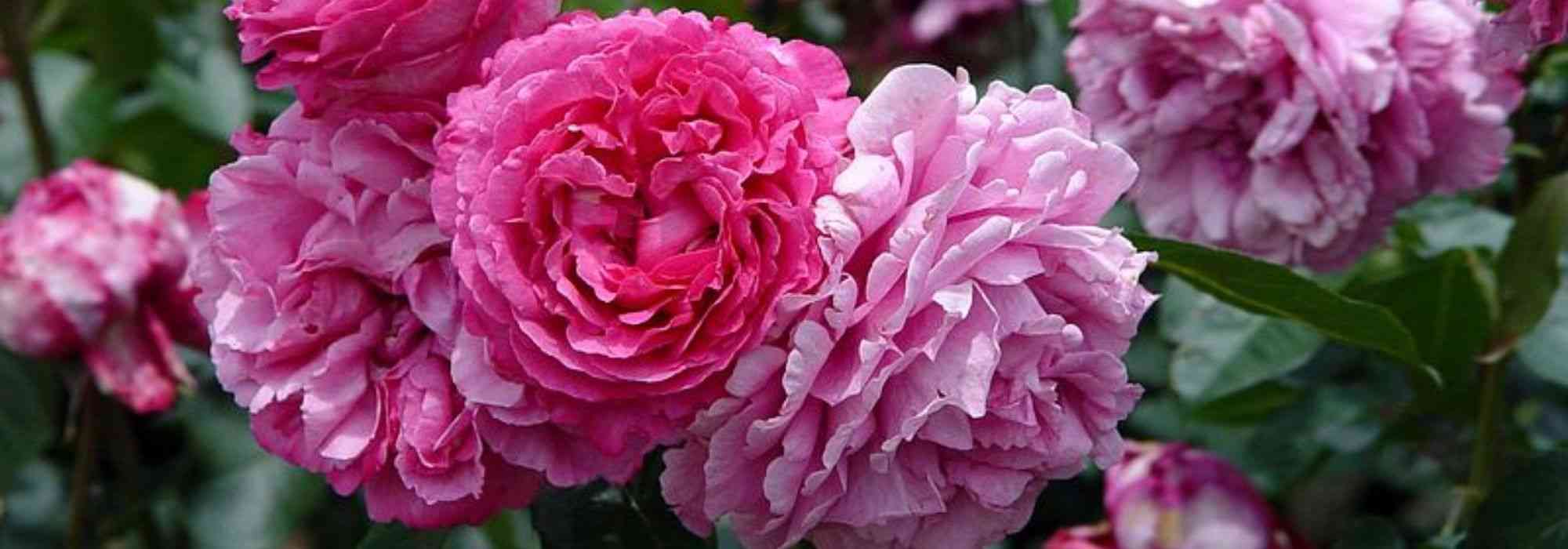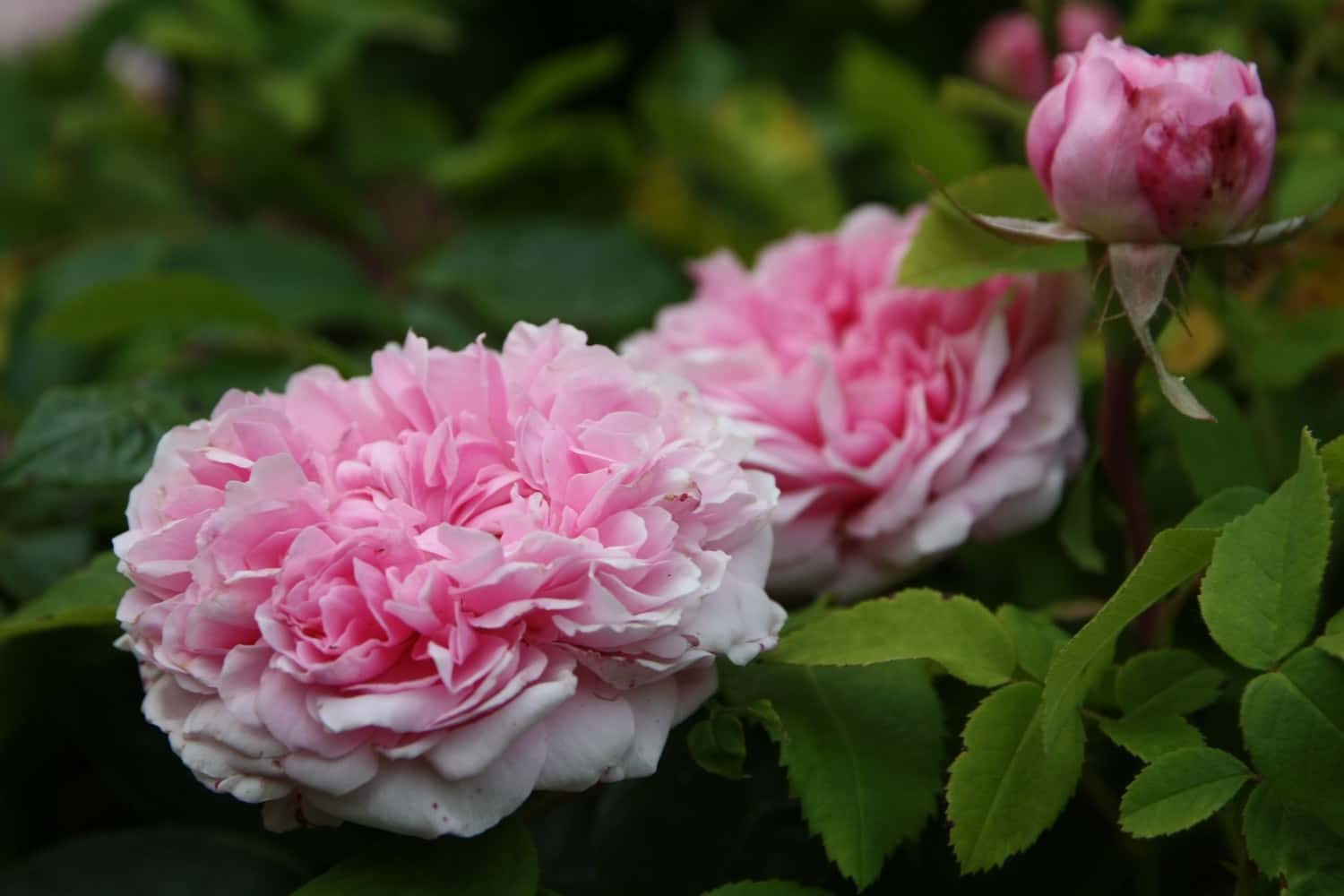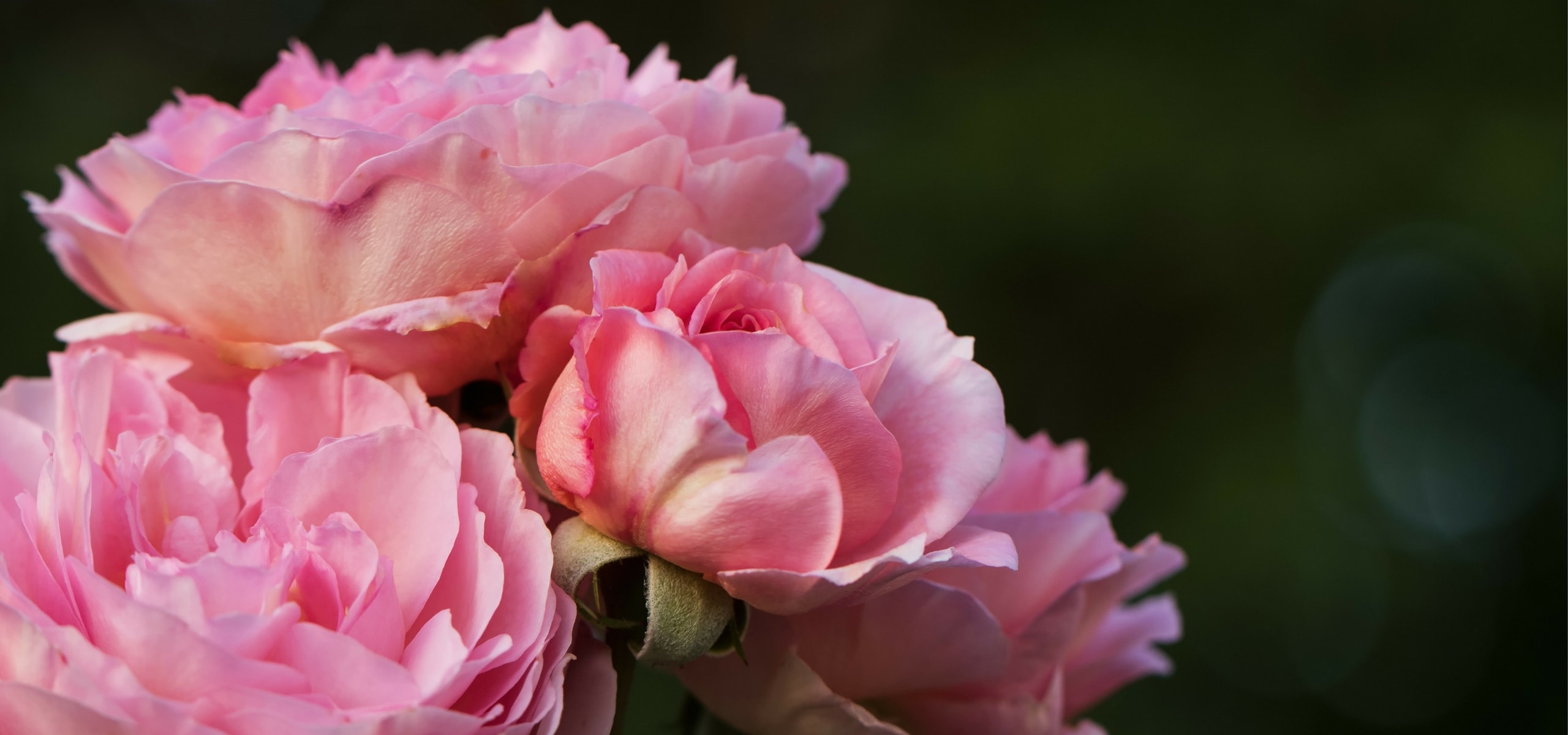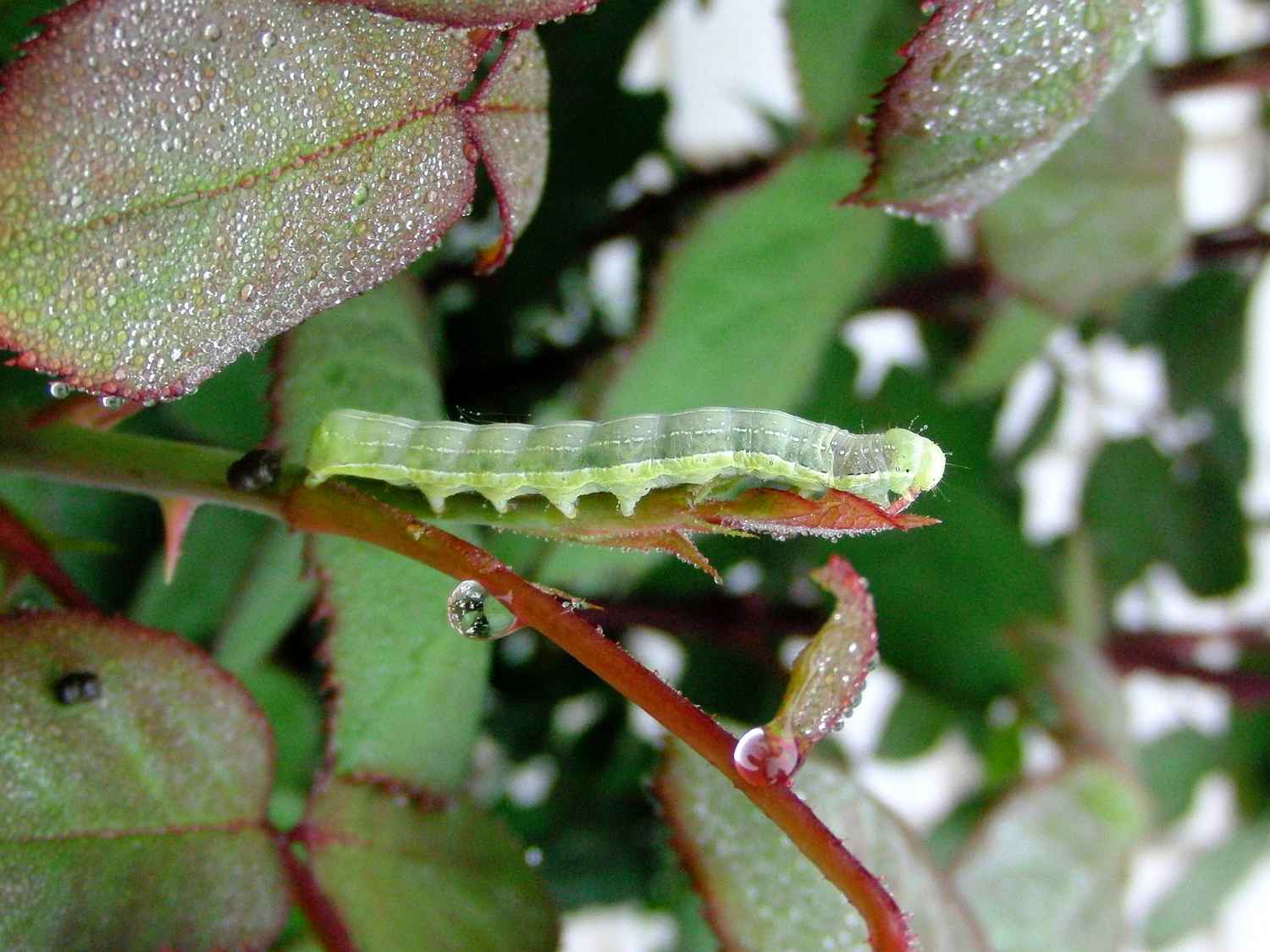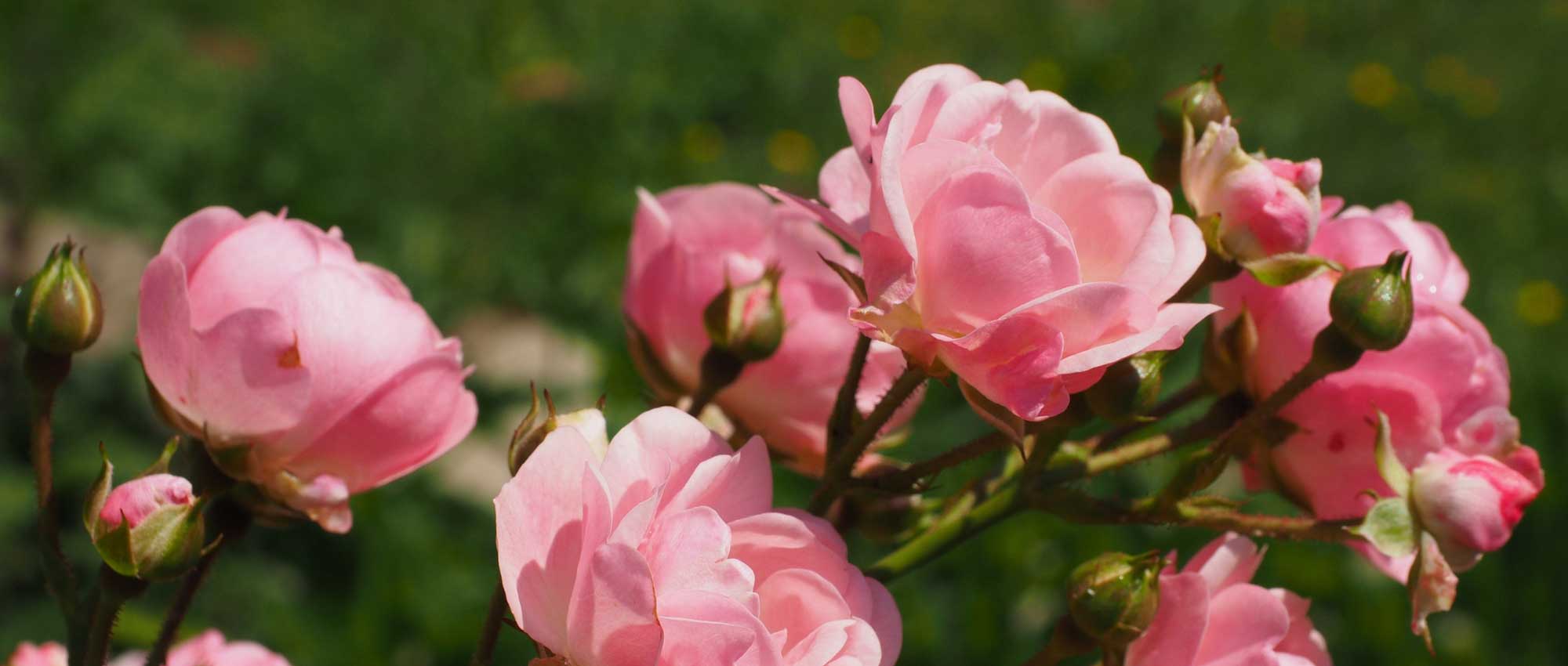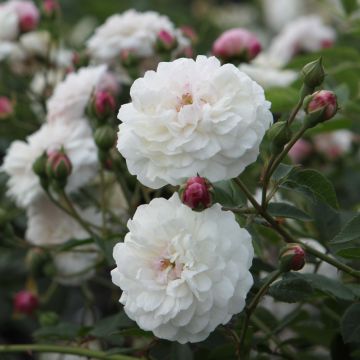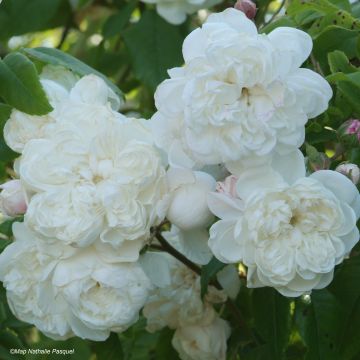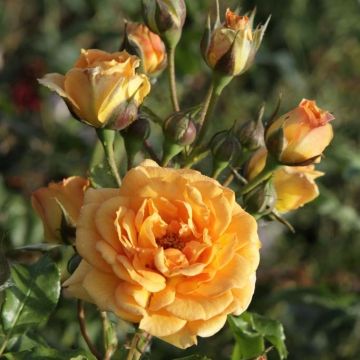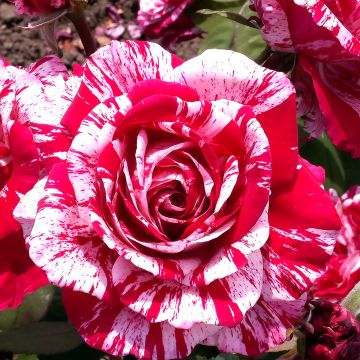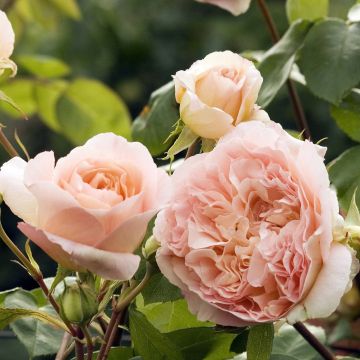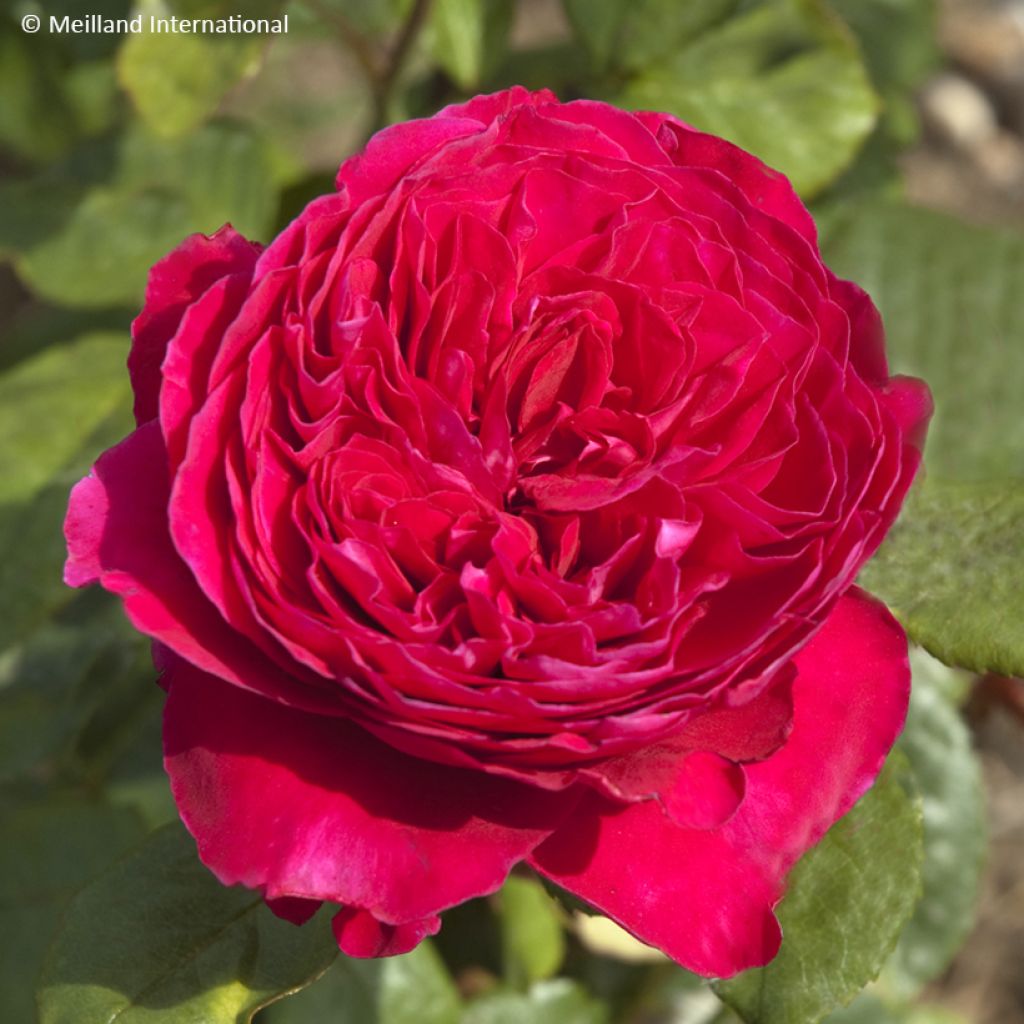

Rosa 'Meikarouz' ALAIN SOUCHON® - Rosier Alain Souchon, Rosier Father's Love, Rosier Caruso
Rosa 'Meikarouz' ALAIN SOUCHON® - Rosier Alain Souchon, Rosier Father's Love, Rosier Caruso
Rosa 'Meikarouz' ALAIN SOUCHON®
Rosier Alain Souchon, Rosier Father's Love, Rosier Caruso
Special offer!
Receive a €20 voucher for any order over €90 (excluding delivery costs, credit notes, and plastic-free options)!
1- Add your favorite plants to your cart.
2- Once you have reached €90, confirm your order (you can even choose the delivery date!).
3- As soon as your order is shipped, you will receive an email containing your voucher code, valid for 3 months (90 days).
Your voucher is unique and can only be used once, for any order with a minimum value of €20, excluding delivery costs.
Can be combined with other current offers, non-divisible and non-refundable.
Why not try an alternative variety in stock?
View all →This plant carries a 24 months recovery warranty
More information
We guarantee the quality of our plants for a full growing cycle, and will replace at our expense any plant that fails to recover under normal climatic and planting conditions.

Does this plant fit my garden?
Set up your Plantfit profile →
Description
The Alain Souchon Rose is a stunning red variety that captivates with its old-fashioned style roses, its satin carmine red hue, and its intense fragrance of May Rose with hints of red berries. With its large, romantic and slightly nostalgic flowers and elegant foliage, it adds incredible charm to any garden. Floriferous and robust, it offers a generous flowering from May until the first frosts. Its disease resistance and excellent cut flower life will delight lovers of classy roses.
The Alain Souchon® Rose is a creation by Meilland dating back to the year 2000. This large-flowering bush rose belongs to the ROMANTICA® range renowned for the retro-charm of its roses and pronounced fragrance. This exceptional variety has been widely awarded for its outstanding qualities. In 2000, it received the Fragrance Prize and Bronze Medal in Buenos Aires, the Fragrance Prize in Rœulx, the Silver Medal and Feminine Prize in Monza, as well as the Fragrance Prize and Silver Medal in Saverne. In 2002, it was honoured with the Fragrance Prize and Bronze Medal in Tokyo, as well as the Fragrance Prize in Orléans.
The Alain Souchon® Rose has a bushy, compact and well-balanced habit: the bush reaches a height of 90 cm to 1 m and a spread of around 50 cm. Its dense, dark green foliage highlights the light cardinal red hue of the flowers. Each one consists of around 100 petals and measures up to 13 cm in diameter. These quartered roses emit a powerful fragrance with notes of May Rose and red berries. The flowering is abundant and continuous from spring until the frosts. The foliage is deciduous, falling in autumn and regrowing in spring. The stems are thorny, as is typical for most roses.
The Alain Souchon® Rose 'Meikarouz' was named in honour of the famous French singer Alain Souchon, a great admirer of roses with retro charm. Captivated by the old-fashioned shape of the flowers and their powerful fragrance, the artist enthusiastically agreed to lend his name to this variety.
The Alain Souchon® Rose ‘Meikarouz’ will make a striking statement in gardens where elegance blends with romance. Its colour enhances flower beds from spring until the first frosts. It pairs beautifully with the delicate blooms of gaura, whose slender stems dance in the breeze, and the lavender spikes of Perovskia, which accentuate the richness of its petals. In a more theatrical setting, it can be combined with a soft pink climbing rose ‘Pierre de Ronsard’ and an ‘Iceberg’ rose, covered in white flowers that temper the red intensity. Whether planted as a standalone feature, in a flower bed, or even in a pot on a sunny patio, this rose exudes its full grandeur with light and warmth enhancing its hues and fragrance.
Plant habit
Flowering
Foliage
Botanical data
Rosa
'Meikarouz' ALAIN SOUCHON®
Rosaceae
Rosier Alain Souchon, Rosier Father's Love, Rosier Caruso
Rosa 'Meikarouz' ROUGE ROYALE
Cultivar or hybrid
Other Large-flower tea Roses
View all →Planting and care
To plant your Alain Souchon rose, prepare the soil by digging a 30 cm cube, breaking up the earth well and adding a base fertiliser such as dried blood or dehydrated horn at the bottom of the planting hole. Place your plant after removing it from its pot, covering the top of the root ball with 3 cm of soil, backfill and water thoroughly to remove any air pockets. In dry weather, water regularly for a few weeks to encourage root establishment. Also remember to feed your rose with a special rose fertiliser to stimulate flowering. Choose a sunny spot - or partial shade in very hot regions.
Planting period
Intended location
Care
Planting & care advice
This item has not been reviewed yet - be the first to leave a review about it.
Similar products
Haven't found what you were looking for?
Hardiness is the lowest winter temperature a plant can endure without suffering serious damage or even dying. However, hardiness is affected by location (a sheltered area, such as a patio), protection (winter cover) and soil type (hardiness is improved by well-drained soil).

Photo Sharing Terms & Conditions
In order to encourage gardeners to interact and share their experiences, Promesse de fleurs offers various media enabling content to be uploaded onto its Site - in particular via the ‘Photo sharing’ module.
The User agrees to refrain from:
- Posting any content that is illegal, prejudicial, insulting, racist, inciteful to hatred, revisionist, contrary to public decency, that infringes on privacy or on the privacy rights of third parties, in particular the publicity rights of persons and goods, intellectual property rights, or the right to privacy.
- Submitting content on behalf of a third party;
- Impersonate the identity of a third party and/or publish any personal information about a third party;
In general, the User undertakes to refrain from any unethical behaviour.
All Content (in particular text, comments, files, images, photos, videos, creative works, etc.), which may be subject to property or intellectual property rights, image or other private rights, shall remain the property of the User, subject to the limited rights granted by the terms of the licence granted by Promesse de fleurs as stated below. Users are at liberty to publish or not to publish such Content on the Site, notably via the ‘Photo Sharing’ facility, and accept that this Content shall be made public and freely accessible, notably on the Internet.
Users further acknowledge, undertake to have ,and guarantee that they hold all necessary rights and permissions to publish such material on the Site, in particular with regard to the legislation in force pertaining to any privacy, property, intellectual property, image, or contractual rights, or rights of any other nature. By publishing such Content on the Site, Users acknowledge accepting full liability as publishers of the Content within the meaning of the law, and grant Promesse de fleurs, free of charge, an inclusive, worldwide licence for the said Content for the entire duration of its publication, including all reproduction, representation, up/downloading, displaying, performing, transmission, and storage rights.
Users also grant permission for their name to be linked to the Content and accept that this link may not always be made available.
By engaging in posting material, Users consent to their Content becoming automatically accessible on the Internet, in particular on other sites and/or blogs and/or web pages of the Promesse de fleurs site, including in particular social pages and the Promesse de fleurs catalogue.
Users may secure the removal of entrusted content free of charge by issuing a simple request via our contact form.
The flowering period indicated on our website applies to countries and regions located in USDA zone 8 (France, the United Kingdom, Ireland, the Netherlands, etc.)
It will vary according to where you live:
- In zones 9 to 10 (Italy, Spain, Greece, etc.), flowering will occur about 2 to 4 weeks earlier.
- In zones 6 to 7 (Germany, Poland, Slovenia, and lower mountainous regions), flowering will be delayed by 2 to 3 weeks.
- In zone 5 (Central Europe, Scandinavia), blooming will be delayed by 3 to 5 weeks.
In temperate climates, pruning of spring-flowering shrubs (forsythia, spireas, etc.) should be done just after flowering.
Pruning of summer-flowering shrubs (Indian Lilac, Perovskia, etc.) can be done in winter or spring.
In cold regions as well as with frost-sensitive plants, avoid pruning too early when severe frosts may still occur.
The planting period indicated on our website applies to countries and regions located in USDA zone 8 (France, United Kingdom, Ireland, Netherlands).
It will vary according to where you live:
- In Mediterranean zones (Marseille, Madrid, Milan, etc.), autumn and winter are the best planting periods.
- In continental zones (Strasbourg, Munich, Vienna, etc.), delay planting by 2 to 3 weeks in spring and bring it forward by 2 to 4 weeks in autumn.
- In mountainous regions (the Alps, Pyrenees, Carpathians, etc.), it is best to plant in late spring (May-June) or late summer (August-September).
The harvesting period indicated on our website applies to countries and regions in USDA zone 8 (France, England, Ireland, the Netherlands).
In colder areas (Scandinavia, Poland, Austria...) fruit and vegetable harvests are likely to be delayed by 3-4 weeks.
In warmer areas (Italy, Spain, Greece, etc.), harvesting will probably take place earlier, depending on weather conditions.
The sowing periods indicated on our website apply to countries and regions within USDA Zone 8 (France, UK, Ireland, Netherlands).
In colder areas (Scandinavia, Poland, Austria...), delay any outdoor sowing by 3-4 weeks, or sow under glass.
In warmer climes (Italy, Spain, Greece, etc.), bring outdoor sowing forward by a few weeks.






























